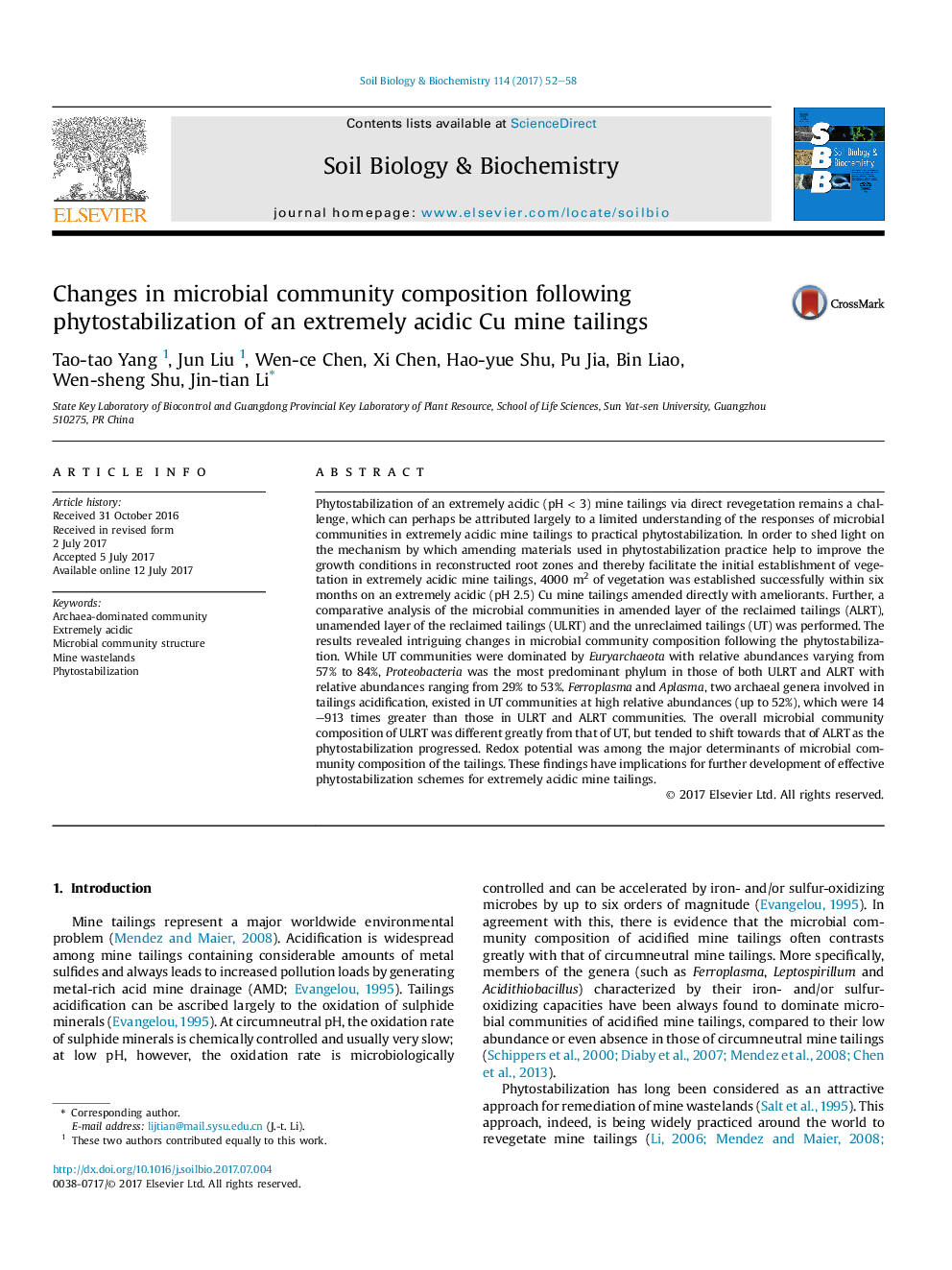| Article ID | Journal | Published Year | Pages | File Type |
|---|---|---|---|---|
| 5516306 | Soil Biology and Biochemistry | 2017 | 7 Pages |
â¢The microbial communities of unreclaimed Cu tailings were predominated by archaea.â¢A vegetation cover of 100% was established on the Cu tailings within 6 months.â¢Phytostabilization practice reduced the relative abundances of archaea by up to 99%.â¢The microbial community composition shifted directionally as revegetation progressed.â¢Eh was a major determinant of the microbial community composition of the tailings.
Phytostabilization of an extremely acidic (pHÂ <Â 3) mine tailings via direct revegetation remains a challenge, which can perhaps be attributed largely to a limited understanding of the responses of microbial communities in extremely acidic mine tailings to practical phytostabilization. In order to shed light on the mechanism by which amending materials used in phytostabilization practice help to improve the growth conditions in reconstructed root zones and thereby facilitate the initial establishment of vegetation in extremely acidic mine tailings, 4000Â m2 of vegetation was established successfully within six months on an extremely acidic (pH 2.5) Cu mine tailings amended directly with ameliorants. Further, a comparative analysis of the microbial communities in amended layer of the reclaimed tailings (ALRT), unamended layer of the reclaimed tailings (ULRT) and the unreclaimed tailings (UT) was performed. The results revealed intriguing changes in microbial community composition following the phytostabilization. While UT communities were dominated by Euryarchaeota with relative abundances varying from 57% to 84%, Proteobacteria was the most predominant phylum in those of both ULRT and ALRT with relative abundances ranging from 29% to 53%. Ferroplasma and Aplasma, two archaeal genera involved in tailings acidification, existed in UT communities at high relative abundances (up to 52%), which were 14-913 times greater than those in ULRT and ALRT communities. The overall microbial community composition of ULRT was different greatly from that of UT, but tended to shift towards that of ALRT as the phytostabilization progressed. Redox potential was among the major determinants of microbial community composition of the tailings. These findings have implications for further development of effective phytostabilization schemes for extremely acidic mine tailings.
Graphical abstractDownload high-res image (431KB)Download full-size image
